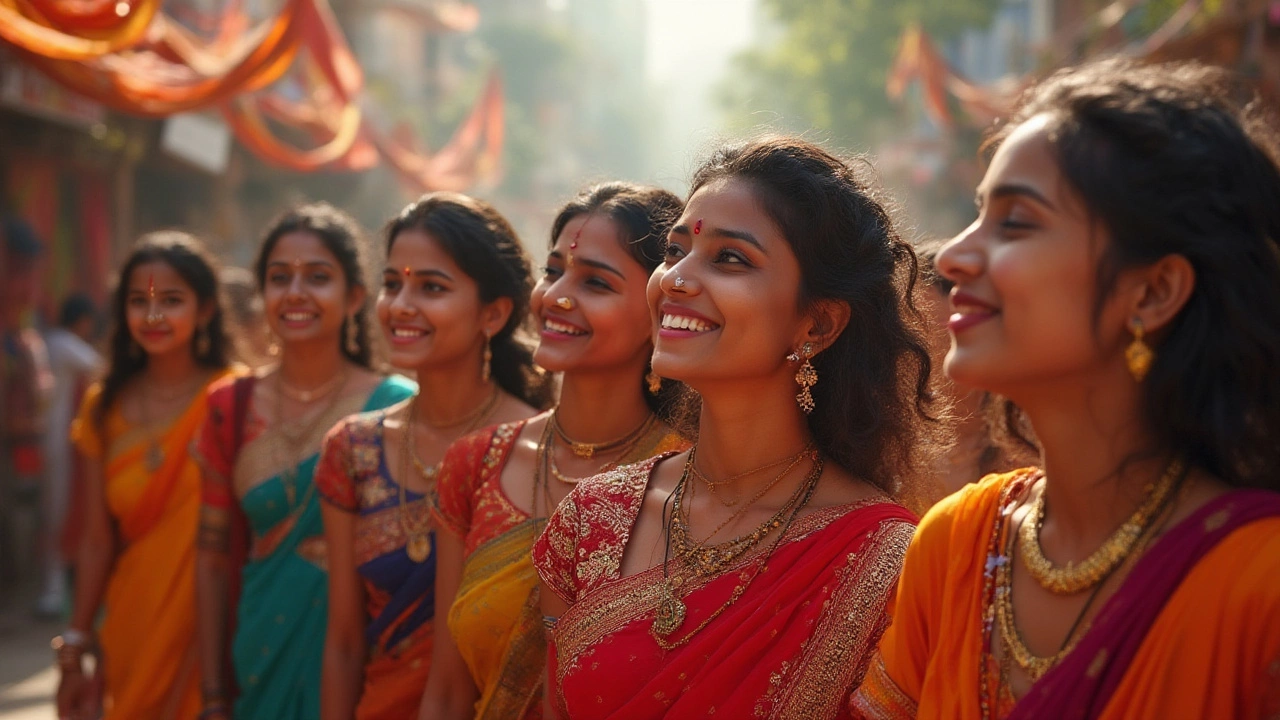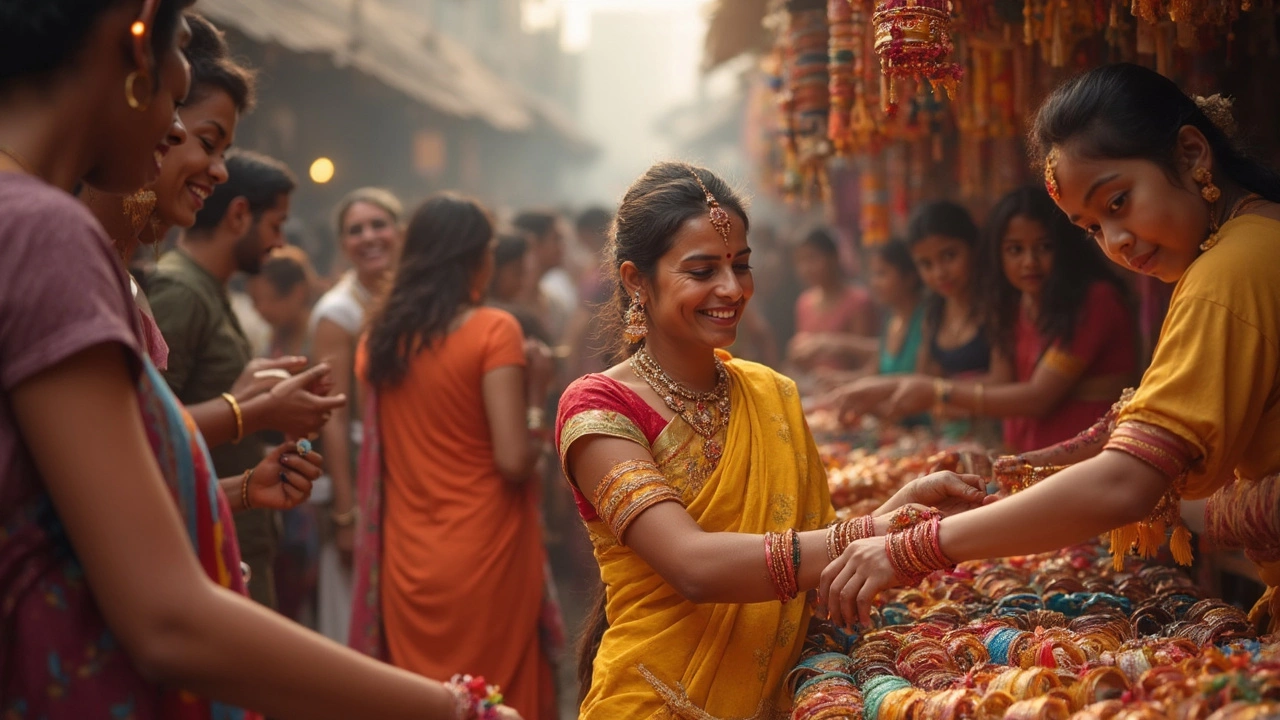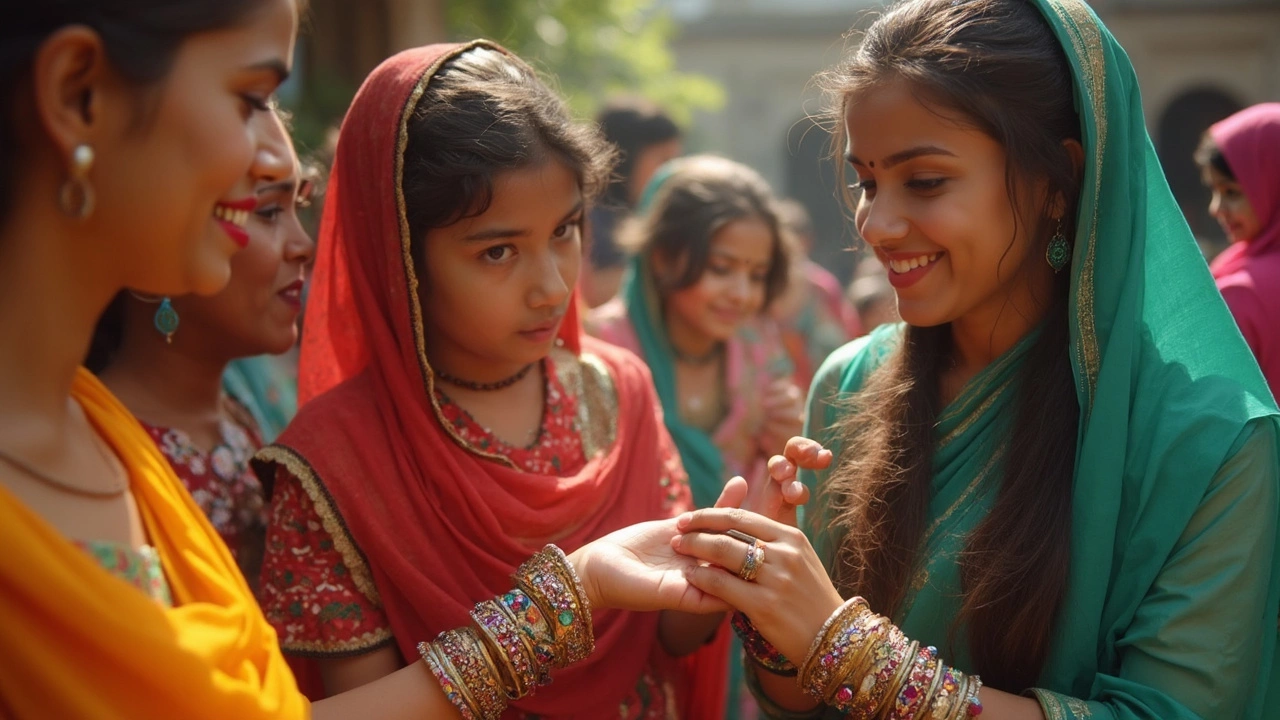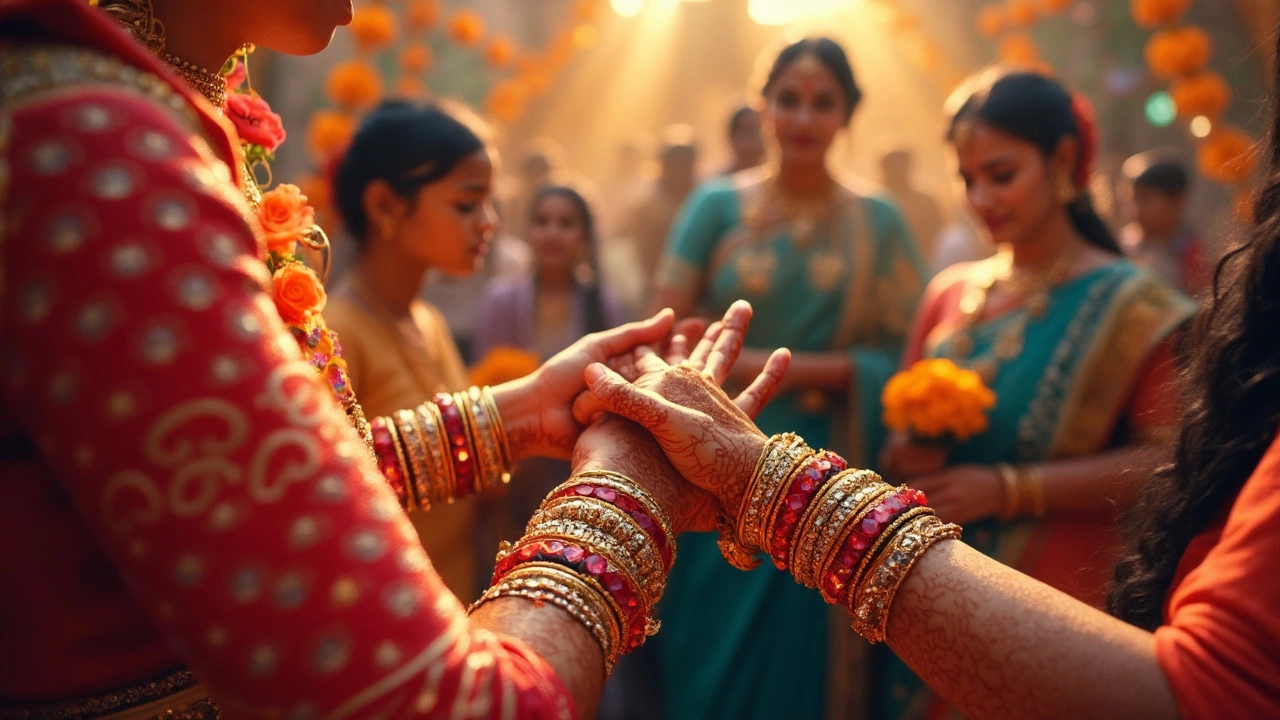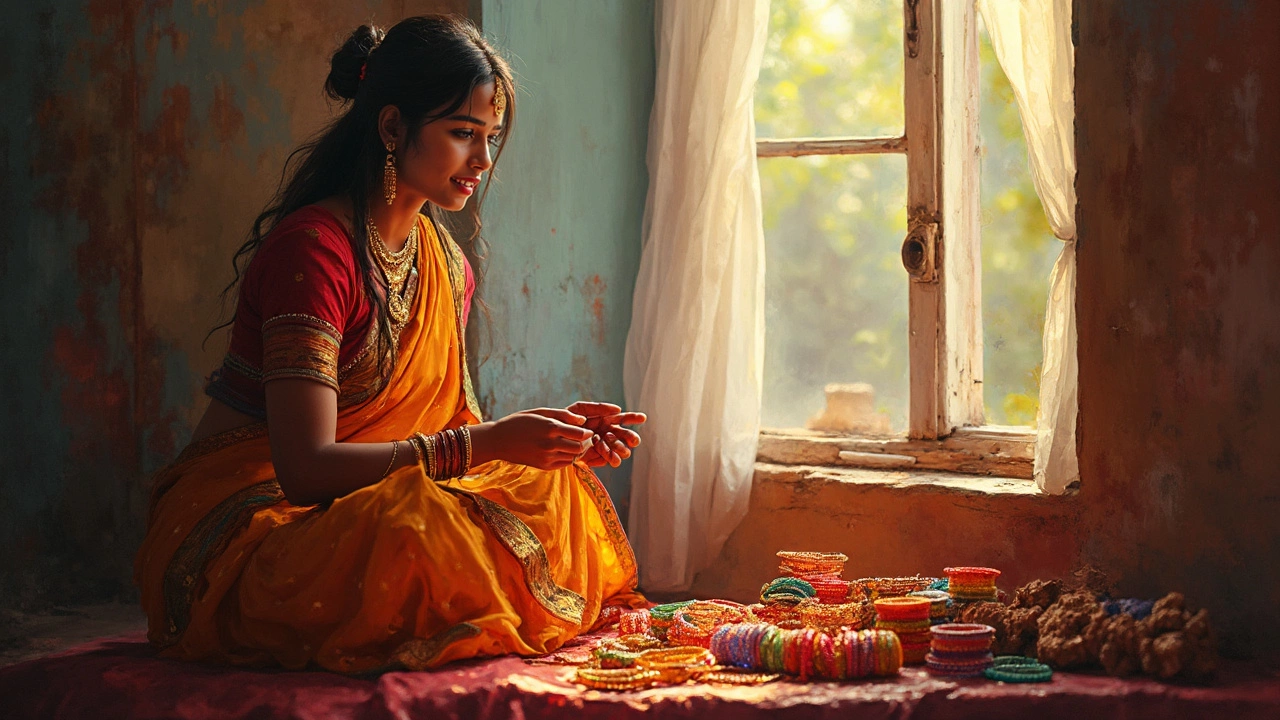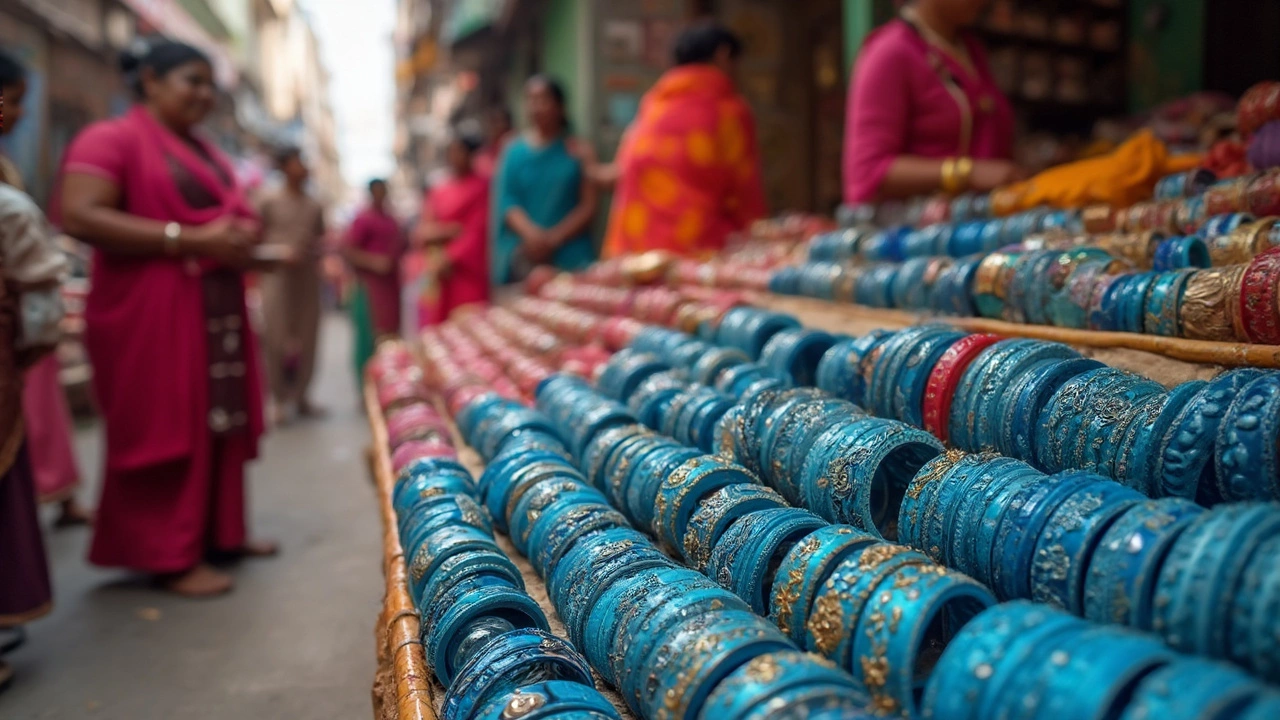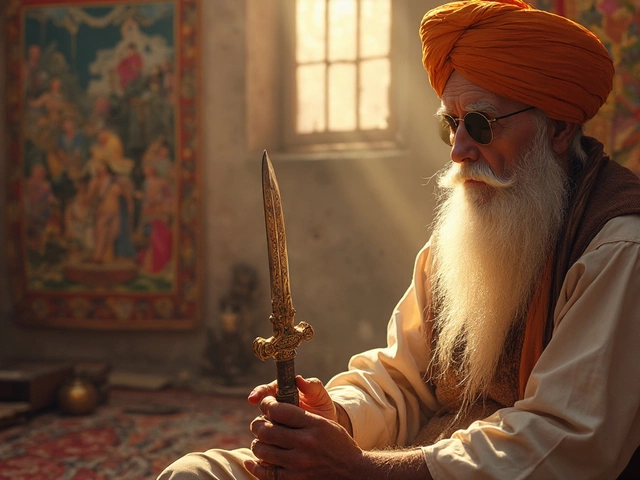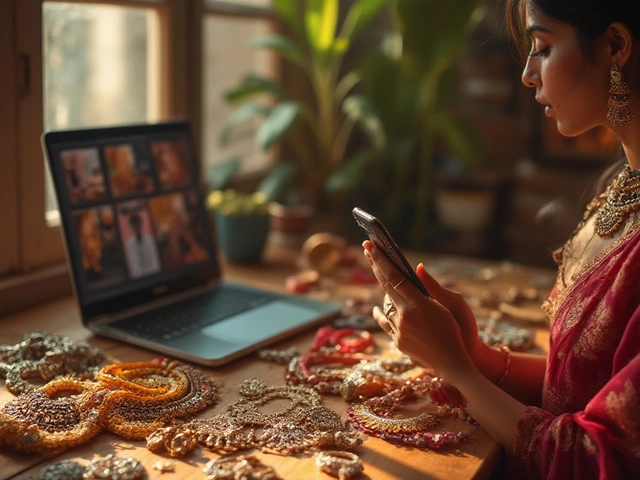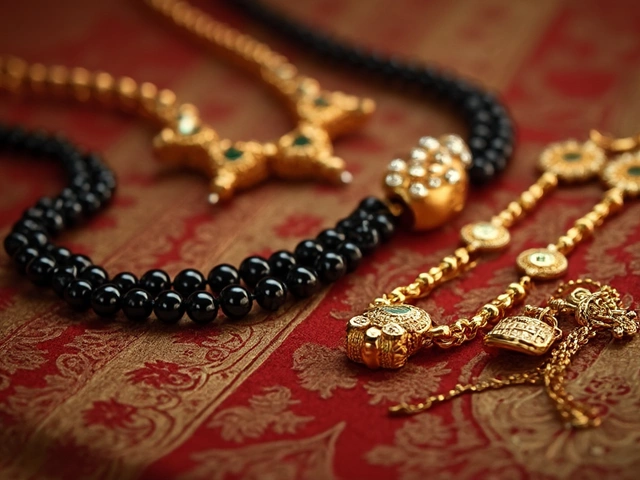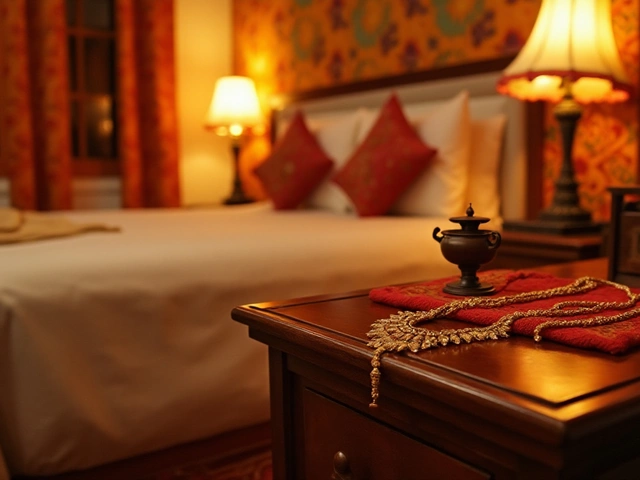Indian Tradition: Jewellery, Fabrics, and Cultural Symbols
When you think of India, you probably picture bright colours, intricate gold work, and silk that shimmers in the sun. Those things aren’t just pretty – they’re part of everyday life and deep‑rooted customs. In this guide we’ll break down the most useful traditions, from how to read a gold hallmark to why black bangles still matter.
Jewellery Traditions You’ll Love
Gold is the king of Indian jewellery. If you see a stamp that reads “875,” it means the piece is 21‑karat gold – about 87.5% pure. The BIS hallmark will also show a tiny triangle, a circle, and a square. Knowing this helps you avoid cheap knock‑offs and get real value.
Silver works a bit differently. Look for “833” on the piece – that’s 83.3% pure silver, the standard Indian mark. It’s lower than the 92.5% you might see abroad, but it’s still solid silver when the hallmark is present.
Black bangles and black beads in a mangalsutra aren’t just fashion statements. Traditionally they ward off the “evil eye” and bring protection to the wearer. Today they’re also a trendy way to add contrast to a gold chain.
Got a nose stud? Different face shapes suit different styles. If you have a round face, a longer stud elongates the look. For a heart‑shaped face, a small hoop or stud placed higher on the nose balances the features. The key is comfort – you’ll wear it for years, so choose a material that feels light.
Buying gold at the right time can save you money. Historically, the months after Diwali and before the wedding season see a dip in prices. Planning your purchase around those periods can give you a few extra rupees per gram.
Traditional Fabrics and Dress
India’s climate demands smart fabric choices. Cotton and bamboo stay breathable in the hot summer, while silk and pashmina add warmth for cooler evenings. If you’re headed to a wedding in Rajasthan, a silk saree with gold thread feels both regal and season‑appropriate.
Each region has its own signature outfit. A Punjabi salwar‑kameez fits well for everyday wear, while a Banarasi silk saree is top‑tier for big celebrations. Knowing the difference helps you pick the right dress for the right occasion.
When you pair jewellery with fabric, colour matters. Gold shines brightest against jewel tones like emerald, ruby, or deep blue. For a more subtle look, try ivory or pastel shades – the gold still pops, but the outfit stays soft.
Remember, tradition isn’t a rulebook you can’t bend. Many people now skip the mangalsutra or wear it in a modern design. The important thing is to respect the story behind each piece while making it work for your style.
So next time you shop for a piece of Indian jewellery or choose an outfit, think about the symbols, the marks, and the climate. Knowing the basics lets you enjoy the beauty without falling for cheap tricks, and it keeps you connected to the rich cultural tapestry that makes Indian tradition so special.
Why Do Girls Wear Nose Pins? Cultural History, Meanings, and Modern Trends Explained
Diving deep into why girls wear nose pins, from the culture and symbolism to trending designs. Get insights, fun facts, and learn what really makes nose pins so popular.
Should Unmarried Girls Wear Bangles? Traditional Rules and Today’s Choices
Bangles play a big role in Indian culture, but questions always pop up about who should wear them, especially unmarried girls. This article breaks down where this idea came from, what traditions actually say, and how things are changing now. We’ll bust some myths, share cool facts about bangles, and give practical tips for anyone who wants to wear them—no matter your relationship status. If you’re curious about how old rules mix with today’s style, this is for you. Walk away with everything you need to know about bangles, tradition, and owning your look.
Scientific Reason Behind Wearing Bangles: Indian Tradition Explained
Ever wondered if there's more to wearing bangles than just tradition or style? Indian bangles actually have some surprising scientific reasons behind them. This article digs into how bangles are believed to affect health, blood circulation, and even energy flow in the body. You'll also pick up some tips for choosing the right kind of bangles for both comfort and tradition. Get ready for some practical and eye-opening facts about this age-old accessory.
Can an Unmarried Girl Wear Sindoor?
Exploring whether an unmarried girl can wear sindoor, this article delves into the cultural and traditional implications. We'll uncover how practices vary across India, highlighting the evolving mindset around this age-old custom. As we navigate through the complexities of tradition and modernity, expect practical insights and surprising facts. The article aims to provide clarity while respecting diverse perspectives on this unique aspect of Indian culture.
The Significance of Wearing Bangles in India
Bangles are deeply embedded in Indian culture, often symbolizing tradition, beauty, and identity. From their historical origins to cultural implications, bangles hold a special place in Indian ceremonies and everyday life. They’re not just accessories but are tied to customs and beliefs, like symbolizing marital status. This article explores the nuances of bangle-wearing across different regions and occasions in India.
Why Hindus Wear Bangles: Tradition and Significance
Bangles are more than just decorative items in Hindu culture—they symbolize various aspects of life including marriage, health, and spiritual beliefs. Worn prominently by women, these colorful bracelets are crafted from various materials like glass, gold, and silver. Understanding their significance can offer a deeper appreciation of their cultural roots. This long-read explores why Hindus wear bangles, their traditional importance, and interesting facts about their use in everyday life.
The Symbolism of Blue Bangles in Indian Culture
Blue bangles hold a special place in Indian culture, symbolizing peace, tranquility, and loyalty. Their significance varies across regions, reflecting personal meanings and age-old traditions. This article explores their cultural roots, symbolic meanings, and the unique ways they are used in celebrations and day-to-day life. Discover why these vibrant adornments continue to captivate and resonate in modern times. Learn how blue bangles can be a meaningful addition to personal style or a thoughtful gift.
